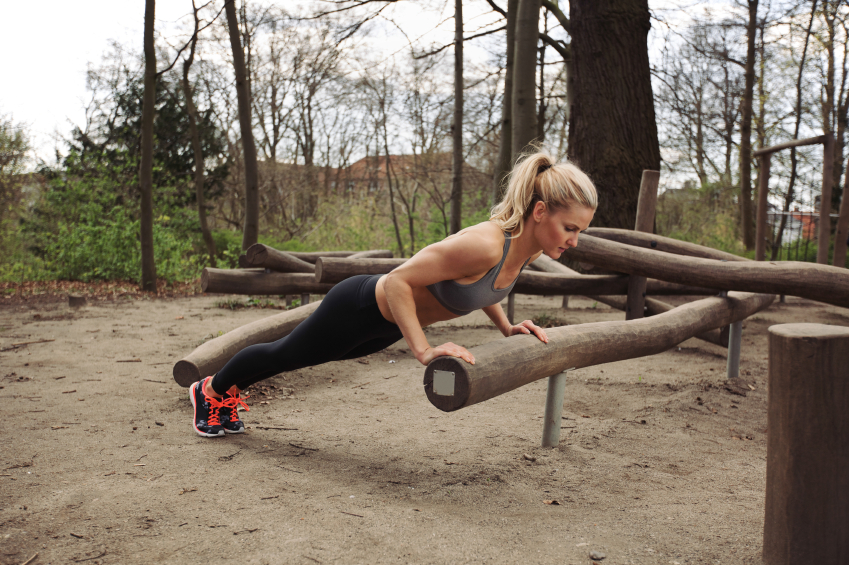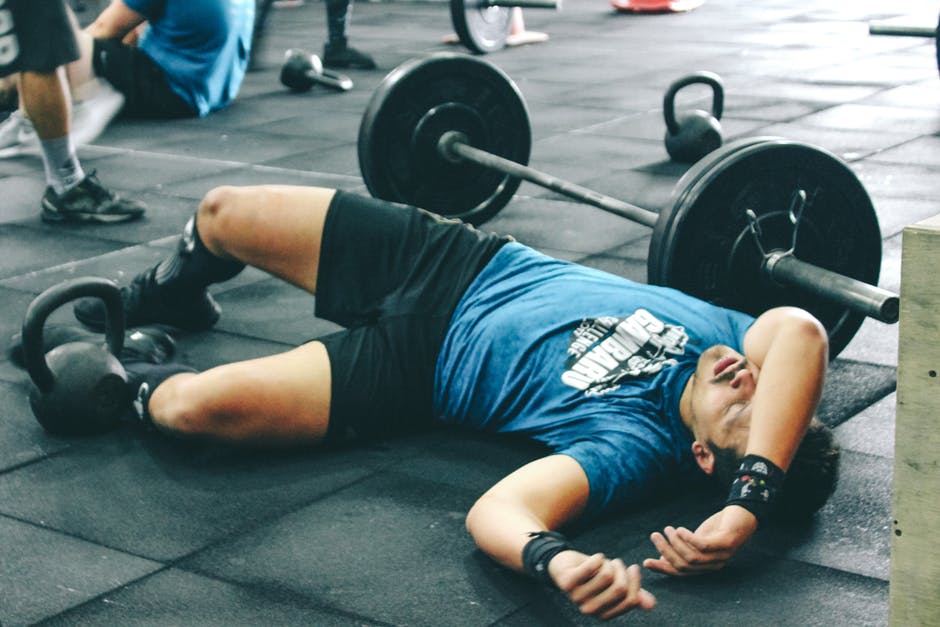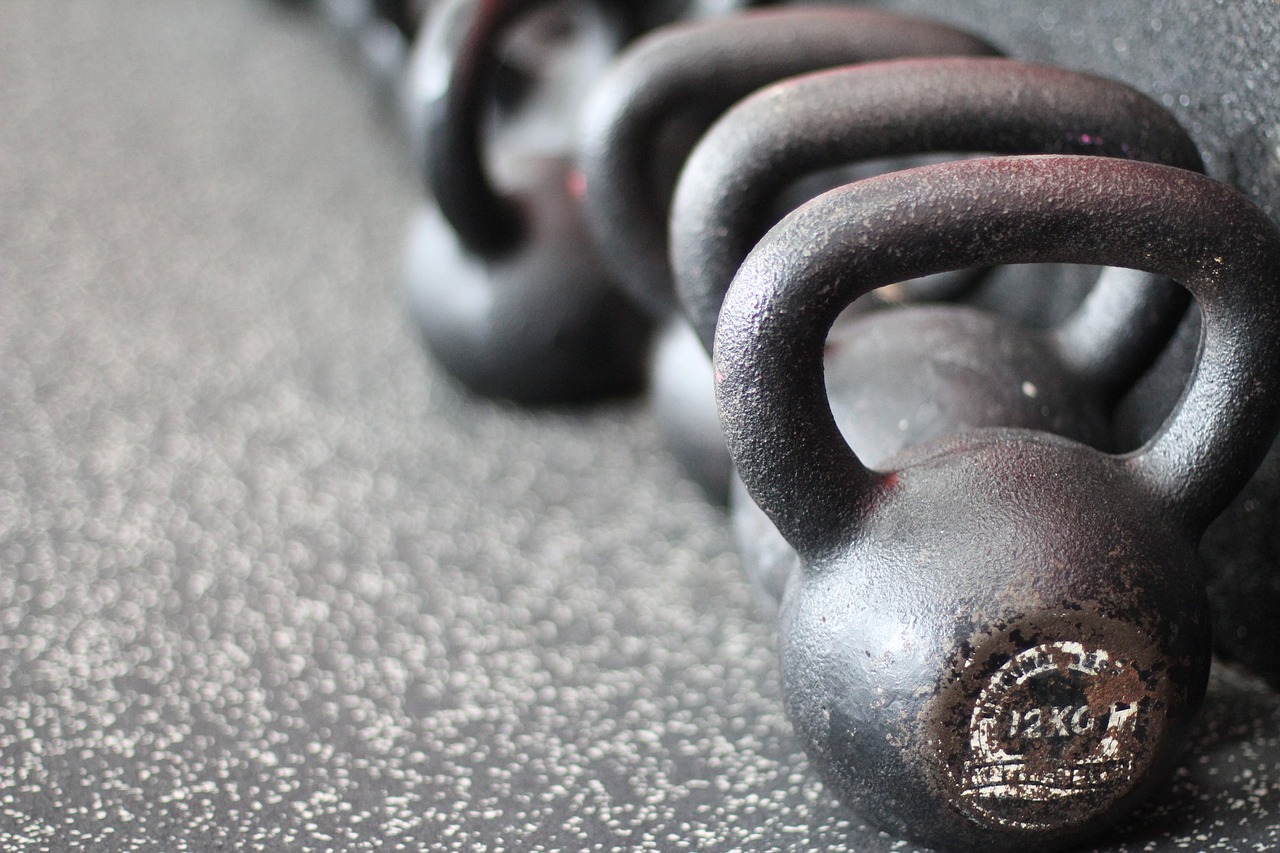The exercises that are used in an athlete’s strength and conditioning program help to determine what kind of gains they will make from their training. When selecting exercises, it is easy to fall prey to a method of training and to lose track of the need to develop athletes to play their sport. For example, bodybuilders will focus on changing up their exercises every four to twelve weeks to keep their muscles responding to the training. Powerlifters will focus on exercises that develop their squat, bench press, and deadlift. Olympic lifters will focus on their lifts as well as on exercises that train parts of the competition lifts. There’s nothing wrong with any of these approaches, but when viewing an athlete’s training over their competitive lifetime a broader perspective needs to be taken.
Strength training is a general type of training for an athlete. It provides the physical foundation so that athletes can be successful in their sport. The weight room is not a good place for sport specificity.
Like with the previous two postings (see http://wp.me/p1XfMm-9a and http://wp.me/p1XfMm-9e), this posting will look at adjusting an athlete’s exercises as they progress through their athletic lifetime.
High School:
High school athletes need to work on everything. This means using strength training to develop the athlete’s physical foundation for future athletic success. This is not the time for a great deal of variety and complexity in terms of the training process. Coaches should pick a handful of fundamental exercises to develop the athlete’s body and focus on those exercises during the athlete’s high school career. Some examples are provided in the table below:
| Exercise Category | Exercises |
| Olympic lifts | Power clean, hang, above the kneePower clean, hang, kneePower clean, hang below the knee
Power clean Clean pulls, hang, above the knee Clean pulls, hang, knee Clean pulls, hang, below the knee Clean pulls Push jerk Split jerk |
| Multijoint: lower body | Back squatsFront squatsLunges
Deadlifts Romanian deadlifts Good mornings |
| Multijoint: upper body | Bench pressIncline pressDips
Pull-ups Bent-over rows Military press |
| Assistance exercises | Biceps exercisesTriceps exercisesFront/side/rear deltoid exercises |
The Olympic lifting exercises provide a technical progression for learning the power clean. The clean and pull exercises are performed from the hang. Over time the bar is started from a position that is closer and closer to the floor. The multijoint lifts provide a foundation for strength and hypertrophy and there is enough variety to keep the athletes interested and engaged over time. Assistance exercises are minimized and represent things that athletes will probably want to do as part of their program.
Collegiate:
Collegiate athletes still need a foundation in terms of their physical development. The difference is that as the athlete proceeds through the year, the exercises can become more focused on developing specific qualities like eccentric strength, power, one-legged strength, etc. During the off-season, the exercises are selected to teach fundamental techniques (like with the Olympic lifts) and provide the biggest fitness base possible. As the competition comes closer, the pure strength and power exercises increase at the expense of other exercises. Finally, due to the lack of time, the in-season has the athlete performing exercises designed to get the most out of the athlete’s training time. The table blow provides an example of what this would look like.
| Exercise Category | Off-season exercises | Pre-season exercises | In-season exercises |
| Olympic lifts | Power clean, hang, above the kneePower clean, hang, kneePower clean, hang below the knee
Power clean Clean pulls, hang, above the knee Clean pulls, hang, knee Clean pulls, hang, below the knee Clean pulls Push jerk Split jerk Power snatch, hang, above the knee Snatch pulls, hang, above the knee |
Power clean, hang, above the kneePower clean, hang, kneePower clean, hang below the knee
Power clean Clean pulls, hang, above the knee Clean pulls, hang, knee Clean pulls, hang, below the knee Clean pulls Push jerk Split jerk Power snatch, hang, above the knee Power snatch, hang, knee Power snatch, hang, below the knee Power snatch Snatch pulls, hang, above the knee Snatch pulls, hang, knee Snatch pulls, hang, below the knee Snatch pulls |
Power cleanClean pullsPush jerk
Split jerk Power snatch Snatch pulls |
| Multijoint: lower body | Back squatsFront squatsLunges
Deadlifts Romanian deadlifts Good mornings Back raises Reverse hyperextensions |
Back squatsFront squatsSplit squats
Pause squats Eccentric squats Romanian deadlifts Good mornings |
Back squatsFront squatsSplit squats
Pause squats Eccentric squats Romanian deadlifts Good mornings |
| Multijoint: upper body | Bench press, barbell/dumbbellIncline press, barbell/dumbbellDips
Pull-ups Bent-over rows, barbell/dumbbell Military press, barbell/dumbbell |
Bench pressIncline pressBent-over rows
Pull-ups Military press |
Bench pressPause bench pressEccentric bench press
Bent-over rows Pause bent-over rows Eccentric bent-over rows Military press |
| Assistance exercises | Biceps exercisesTriceps exercisesFront/side/rear deltoid exercises | N/A | N/A |
As you can see from the table, in the off-season the focus is on teaching the power clean and the jerk. The power snatch is introduced, but it’s not a strong focus. This changes as the year progresses. From off-season to in-season; the use of squat, press, and row variation changes until eventually pause and eccentric variations are included. Hip extension exercises, which strengthen the hamstrings in a lengthened position, are incorporated year-round. The exercises listed in this table provide a great deal of variety for potential three- or four-day-a-week strength training. For example:
| Off-season workout | Pre-season workout | In-season workout | |
| Day One | Back squatsRomanian deadliftsBench press
Bent-over rows Military press |
Back squatsRomanian deadliftsBench press
Bent-over rows Military press |
Power clean + front squatsFront squats + split jerkRomanian deadlift + clean pulls
Eccentric bench press Bent-over rows |
| Day Two | Power clean, hang, above the kneeClean pulls, hang, above the kneePush jerk | Power cleanClean pullsSplit jerk | |
| Day Three | Front squatsLungesGood mornings
Reverse hyperextensions |
Pause squatsGood morningsIncline press
Pull-ups Military press |
Snatch pull, no explosion + power snatchEccentric back squat + vertical jumpBench press + MB throws
Bent-over rows + MB throws |
| Day Four | Incline pressDipsPull-ups
Front/side/rear deltoids Biceps/triceps |
Power snatch, hang, above the kneeSnatch pulls |
Elite/Professional:
When an elite athlete has an extensive training history, it becomes difficult to overload their training for them to keep making gains. They are closer to their genetic ceiling, so it becomes more difficult and dangerous to continue increasing the weight that they can lift on the fundamental exercises like the back squat and bench press. Due to the nature of their competitive season (i.e. it’s longer) and the need to focus on special and specific training, the volume of the training cannot be continuously increased either. This leaves changing the exercises that are being used as the primary exercise variable to change.
An elite athlete will use a range of exercises to accomplish their training aims. These may range from fundamental exercises (like a back squat) to an extremely event specific exercise (like a split squat with a 10-second descent on each repetition). It needs to be kept in mind that at this level, many exercises develop the same muscles and qualities. Some example are listed below, contrasting between what a high school athlete might use and what an elite athlete might be able to use. The example below is for a track and field jumper or sprinter. Note that the Olympic lift example is only looking at variations of the clean and jerk, the snatch has not been included for this example.
| Exercise Category | High School | Elite |
| Olympic Lifts | Power clean, hang, above the kneePower clean, hang, kneePower clean, hang below the knee
Power clean Clean pulls, hang, above the knee Clean pulls, hang, knee Clean pulls, hang, below the knee Clean pulls Push jerk Split jerk |
Power clean, hang, above the kneePower clean, hang, kneePower clean, hang below the knee
Power clean Split clean, hang, above the knee Split clean, hang, knee Split clean, hang, below the knee Split clean One-legged clean Dumbbell clean (power, split, or one-legged), hang, above the knee Dumbbell clean (power, split, or one-legged), hang, knee Dumbbell clean (power, split, or one-legged), hang, below the knee Kettlebell clean (power, split, or one-legged) Clean pulls, hang, above the knee Clean pulls, hang, knee Clean pulls, hang, below the knee Clean pulls Push jerk with barbell, dumbbells, or kettlebell Split jerk with barbell, dumbbells, or kettlebell |
| Multijoint: lower body (just squats in this example) | Back squatsFront squats | Back squatsFront squatsSplit squats
Overhead squats Back/front/split/overhead squats with a pause Back/front/split/overhead eccentric squats One-legged squats Back/front/split/overhead/one-legged squats with chains or bands |
As you can see from the above example, 12 exercises for the high school athlete have easily been turned into 54 possible exercises for the elite athlete.
One of the best ways that I’ve found to approach this is to combine it with the “do one more” idea that I mentioned in the first installment of this series. To do this, let’s pick an exercise that we’re going to begin with. In this case it will be the back squat. We want our athlete to train in the 70-80% range and be able to hit eight to twelve repetitions per set. To make the math easy, we’ll have our athlete’s 1-RM be 400 pounds. Our goal is for our athlete to do one more total repetition each week. So, the table below shows the training for the first several weeks (notation is sets x reps x weight lifted, the number in parenthesis is the total number of repetitions done at our training weight each week):
| Week 1 | Week 2 | Week 3 | Week 4 | Week 5 | |
| Back squats | 3x8x280 (24) | 3×9,8,8×280 (25) | 3×9,9,8×280 (26) | 3x8x280 (24) | 3×8,8,7×280 (23) |
As you can see, in week three our athlete peaked on this exercise and actually began regressing in weeks four and five. So below shows an example of how we can address this if we see it in an elite athlete’s training:
| Week 1 | Week 2 | Week 3 | Week 4 | Week 5 | |
| Back squats | 3x8x280 (24) | 3×9,8,8×280 (25) | 3×9,9,8×280 (26) | 1x8x280, 2x5x320 (18) | |
| Pause back squats | 3x6x240 (18) |
After the first set in week four, it was evident that the athlete was not going to be improving on the back squat. As a result, the weight was moved up to 80% for the last two sets. The extra weight provided the overload, but was also fewer repetitions than we’d like to see the athlete doing. So, beginning in week five the exercise was changed to a pause back squat (which has a lower volume than the regular back squat), and the process of trying to do one more each workout continues.



